If you experience persistent pain in your pelvis, back, shoulder, or neck, you might have an unconscious tendency to protect yourself by increasing rigidity in your body. The Cat/Cow Pose help to undo that stiffness.
This might look like holding your shoulders up toward your ears, holding your breath, and abdominal or butt gripping.
If we move and breathe mindfully, we can decrease tension by encouraging rib expansion and spinal mobilization. This decreases superficial muscle (muscles closer to the outside of the body) over-activity and helps reprogram the nervous system.
Create the flow of Cat pose and Cow pose
Cat Pose and Cow Pose can be practiced separately or together, depending on your body’s needs.
Start by coming on to the ground or yoga mat and find the table top position on your hands and knees.
Your knees will be hip distance apart and your hands will be directly under, or slightly in front of, your shoulders. Watch that you don’t hyperextend your elbows—try a microbend so you don’t lock your elbows. This will ask your body to use your muscles more versus relying on the joint and ligaments.
To activate your quads more, press the tops of your feet into the ground.
Cat pose
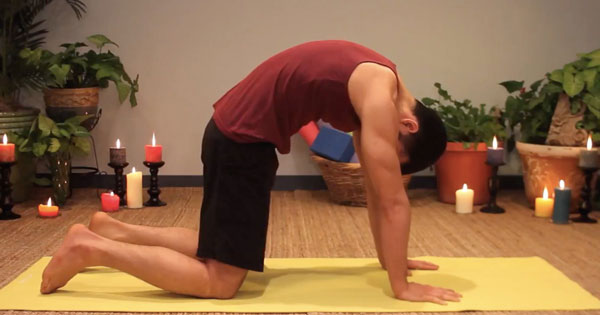
Exhale into Cat Pose as you move into spinal flexion (curling the spine):
- Curl your pelvis under as if you were drawing your tail between your legs.
- Pull in your lower abdomen as you curl your tailbone under.
- Allow your pelvis to curl under, your spine to create a C shape, draw your chin to your chest and your upper back up towards the ceiling.
Cow Pose
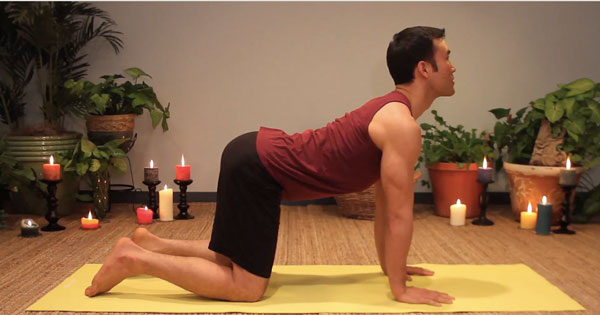
Inhale into Cow Pose as you move into spinal extension (arching the back):
- Visualize your tailbone reaching up towards the ceiling.
- Release your belly towards the floor.
- Allow your chest to melt through your shoulders.
- Bring your head to look forward (or up).
Is the breathing confusing? Read my thoughts about pairing breath with movement.
Make Cat/Cow Pose work for you
The beauty of a yoga practice is its flexibility…pun intended ;).
Feel free to make adjustments to the positioning and use props. Try some of the variations below and make it work for you!
Use your fists
Do you use your hands and forearms at a keyboard all day? Or taking care of baby? You might prefer not having your wrists bend at such a sharp angle.
One variation is to make a fist and bear weight on the fist.
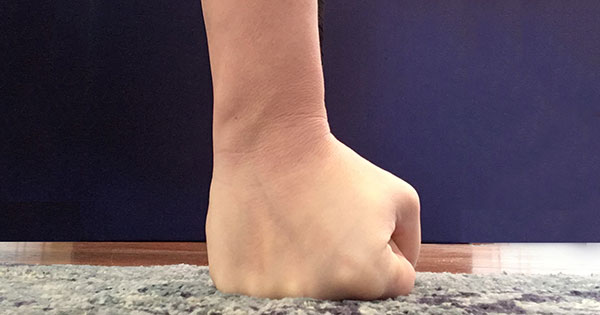
Another option is to place your hands on arm weights on the ground.
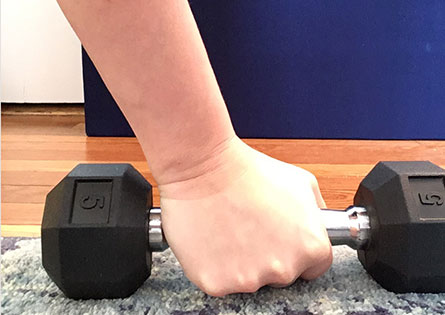
Cushion your knees
Lots of folks have tenderness at the bump just below the knee, called the tibial tubercle.
Try rolling your yoga mat up to give you a little more padding. If you have an extra mat or towel you can place it horizontally across your mat for more cushion.
Stand or sit
Have you had a surgery or unable to weight bear on your knees for another reason? Try Cat/Cow Pose while sitting or standing with your hands on your thighs.
In the seated option, instead of weight bearing through the shoulders and knees we weight bear through the sitz bones. This offers a different perspective for pelvic floor muscle awareness.
As you exhale, pull your lower abdomen in as you curl your tailbone under. Allow your pelvis to curl under, your spine to create a C shape, and chin towards chest.
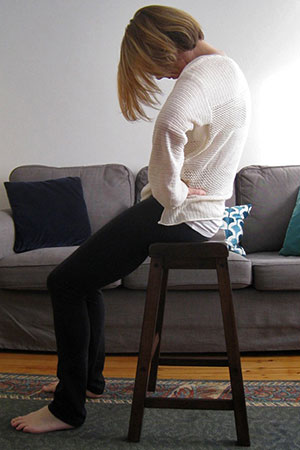
As you inhale, imagine your tailbone untucks, coming back into a neutral spine and into spinal extension.
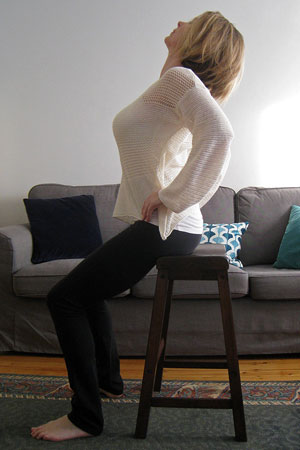
Why choose Cat/Cow pose?
Flexibility
Cat/Cow Pose increases flexibility of the back muscles.
When you move slowly and mindfully between Cat and Cow Pose, you can practice moving segmentally through the spine, imaging you are moving one vertebra at a time. A traditional Cat/Cow starts with curling the chin towards the chest while the pelvis tucks, curling into a C shape.
Another option would be to start the curl of Cat at the top of your spine by tucking your chin and continue to flex through the whole spine:
- Imagine that each vertebra is being magnetically pulled up toward the sky until you reach your waist, then the pelvis tucks under.
- To reverse, untuck the pelvis, then sink the mid-back vertebra toward the floor, imagining moving one at a time.
- To finish out the movement your head will unfold forward and up.
Abdominal and pelvic floor activation
Are you working on strengthening your pelvic floor muscles to prevent or treat incontinence or pelvic organ prolapse?
When you curl into Cat, try exhaling as you pull your lower belly up towards the spine. You can think of zipping all the way from the pelvic floor muscles and scooping through the lower abdomen if that is something you are working on.
Pelvic floor release
Are you working on releasing your pelvic floor muscles to help reduce pelvic pain?
When you release into Cow, imagine your tailbone releases away from your pubic bone and your sitz bones spread apart. When you pair this with an inhalation you will be enhancing the natural movement of the pelvic floor muscles with the breath.
Who is this posture good for?
This posture is a gentle warm-up that can be a nice start to a yoga practice.
I also like Cat/Cow after I’ve been sitting for a while and want to get some segmental movement into my spine. Anytime we are moving the spine we will have a direct effect on the pelvis.
Additionally, most adults need more opportunities to move in a variety of ways as we are often stuck in prolonged sitting postures during the day. Standing or seated Cat/Cow is a posture you can easily do at your cubicle or home office.
Enjoy and move easefully!
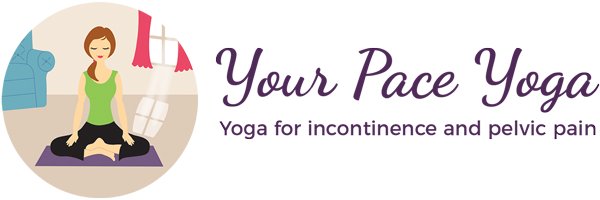
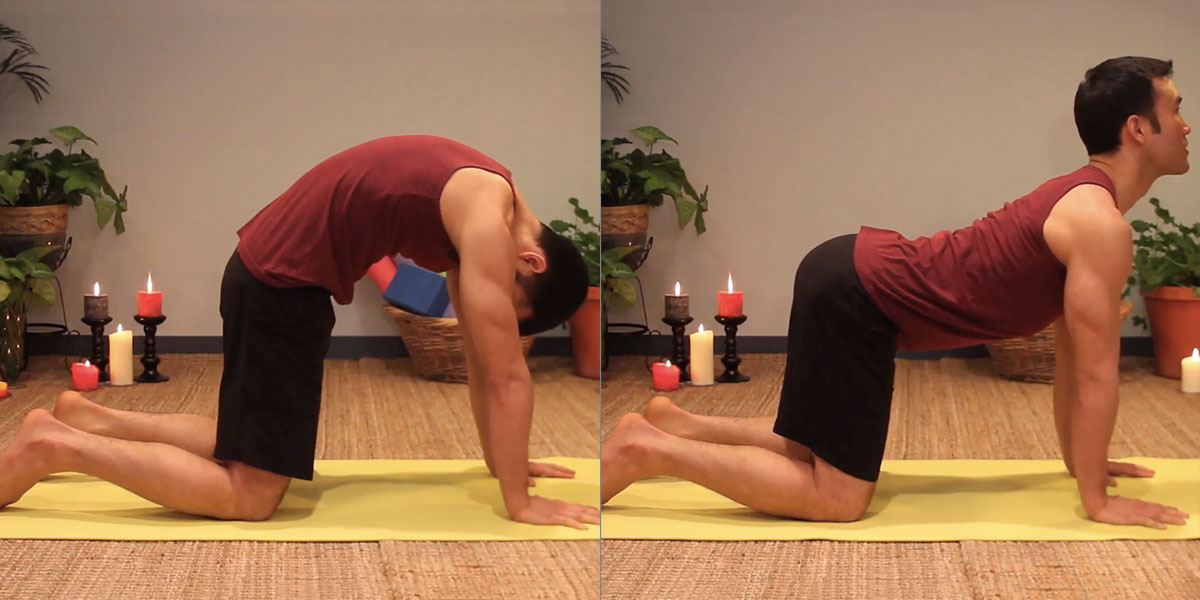
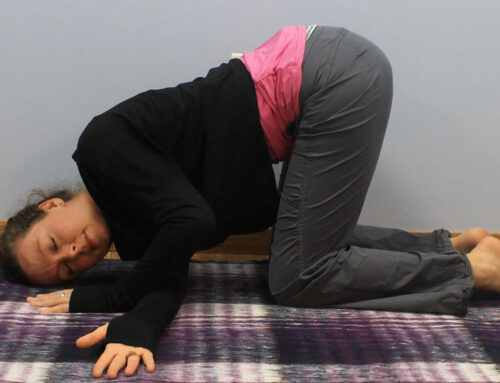
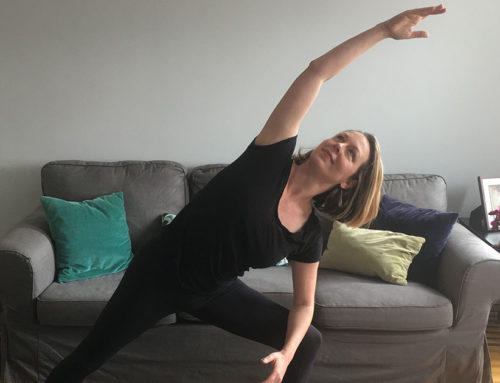
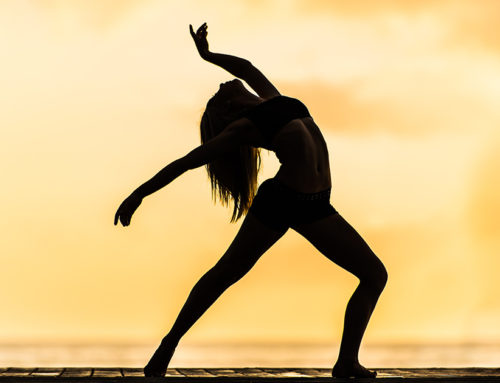
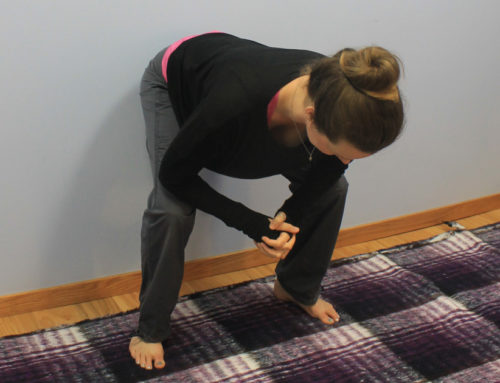
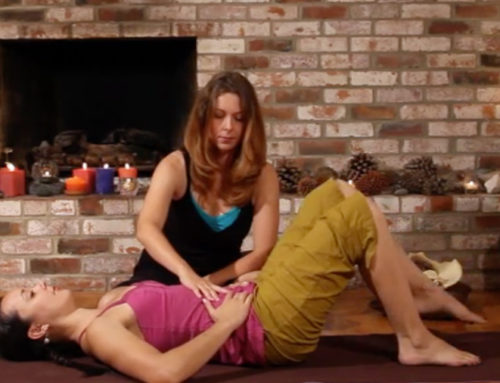
This is a great description! Thank you!